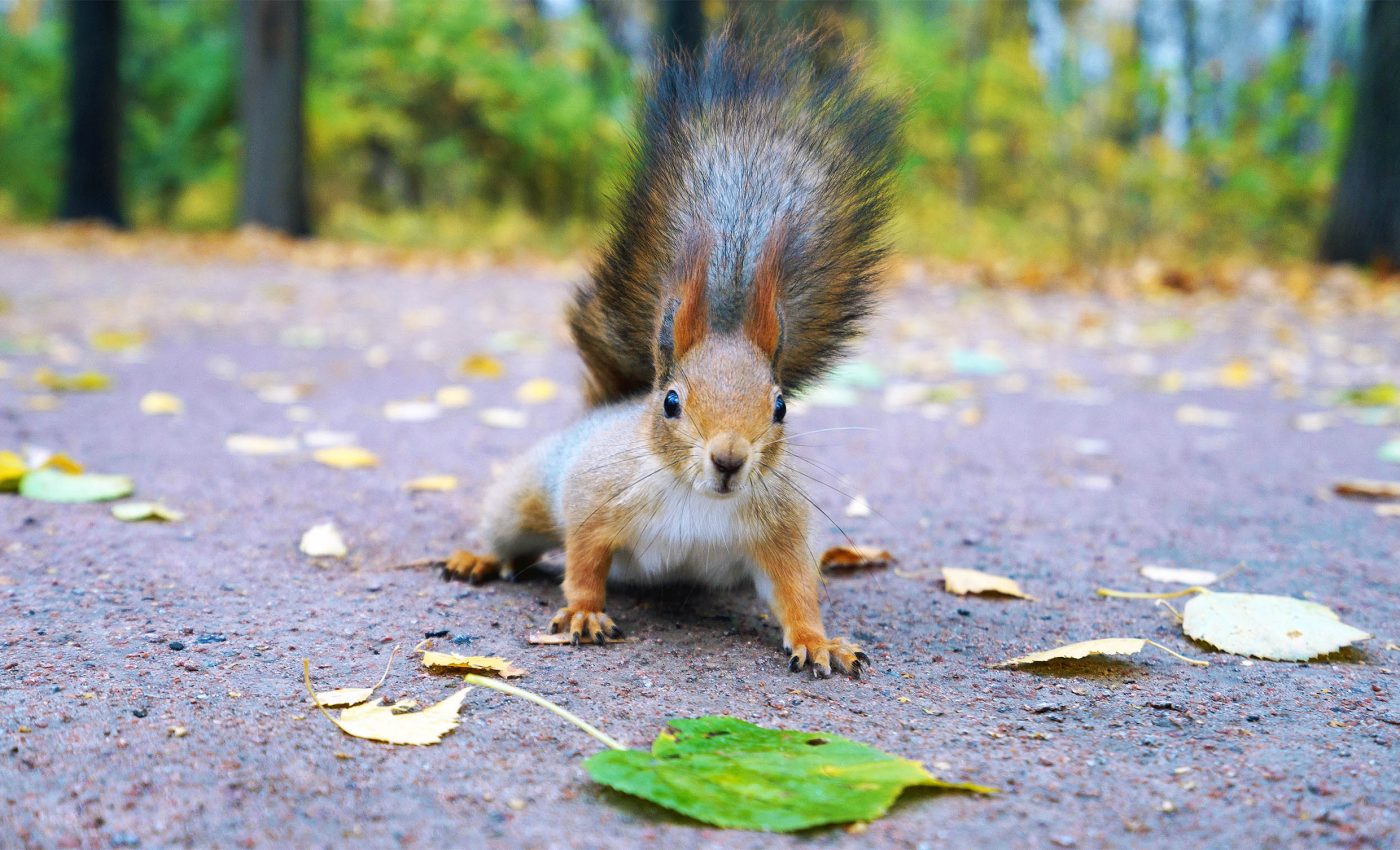
Squirrels like to hang out on roads and streets, scientists finally know why
A noisy road can sometimes make city squirrels feel safer from hawks. A new study on urban grey squirrels reports that steady traffic sound lowered their caution near roads.
The research, conducted in the United Kingdom, revealed a simple pattern. Safety felt higher when noise was loud and predictable in sites closest to traffic during daylight and dusk.
Road noise and squirrels
Predators hunt by surprise, and background sound can blur warning cues. When the hum is steady, the odds of a sudden rustle or wingbeat breaking through may drop, so squirrels trade some caution for calories.
Ecologists call this the landscape of fear, spatial patterns of perceived danger that steer animal choices. That landscape can shift with human sound, as shown across species in one broad review.
The study was led by Dr. Kristin Thompson of the University of Exeter. Her team mapped how risk perception tracked with distance to roads and the steadiness of noise.
How the team tested fear
The researchers used a standard technique called giving-up density, the amount of food left when an animal stops foraging. Lower leftovers mean a place feels safe enough to keep eating.
The team set paired feeding trays, one under cover and one in the open, then checked what remained. The difference between the two shrank near roads with loud, steady noise.
Noise that jumped up and down told a different story. Where volume was variable, squirrels treated foraging as riskier and left more food behind in the open trays.
Field crews also logged how far each site sat from the nearest lane, and recorded baseline sound during peak and off peak hours. They noted vegetation cover and other features that might nudge a squirrel toward caution, and built that into their models.
Road noise guides squirrels
Noise predictability matters because animals learn patterns and allocate attention. Unpredictable sound can often grab focus, drowning signals and making every minute feel like a maybe.
Chronic human made sound can also nudge physiology. In wild birds, a community level field experiment tied long term noise exposure to altered stress hormones and lower reproductive success.
Ecologists sometimes describe loud, unpredictable sound as a special kind of anthropogenic noise, human generated sound from machines and traffic. Consistency changes how brains filter that input during foraging, shaping how much time animals can afford to look up.
Animals also use their neighbors as sentinels. Lost alarm calls or hurried movement can ripple through a patch, changing how long a forager lingers and even dominance around feeders.
Why cities should care
Squirrels are not just park regulars, they are part of urban food webs. In Britain, greys are classed as invasive and can pressure native reds.
City planners weigh safety, access, and wildlife when they design streets and greens. If steady sound lowers fear near roads, animals may cluster there, which could boost roadkill risk and reshape where plants get their seeds.
Green corridors often run beside routes in many towns and suburban neighborhoods today. Noise carries along those strips, shaping where animals pause to eat and rest, and move between trees.
Managers can also check whether predictable maintenance schedules blunt startle responses. Quiet windows around dawn could limit surprises to foraging wildlife, especially during breeding, and encourage safer routines.
“Our findings suggest human activities have a double-edged impact on urban wildlife like the grey squirrel,” said Dr. Sasha Dall from the University of Exeter.
“This ability to navigate complex risks is an example of why grey squirrels are so successful in urban spaces,” said Dr. Thompson.
Limitations and open questions
The study’s twist does not mean noise is helpful to wildlife. A controlled field experiment that played traffic sound, without cars, showed animals avoided noisy habitat and changed movement.
What this work shows is that risk is relative. It depends on context, history, and local cues together.
This project measured perception, not actual chases or catches. That foraging metric links decisions to risk but does not record predator attacks, and it reads behavior rather than direct encounters.
Seasons, food abundance, and predator communities may alter the pattern. Young animals might weigh sound differently from adults, and winter could change the trade.
Roads can offer refuge from hawks, yet vehicles create a separate hazard. If more squirrels feed near curbs, survival may hinge on how often crossings happen on those blocks.
Other species will likely respond in their own ways. Some predators key in on quiet parks, while others avoid heavy sound entirely, depending on their hunting style and sensory systems.
How roads affect squirrels
Small choices add up. Keeping bird feeders a few yards from roads, and adding shrubs as cover, can pull foraging away from traffic.
Cities can test soundscapes the way they test lighting. Consistent schedules for leaf blowers and construction may reduce startle, while quiet pockets can give animals a break.
Planting that slows foot traffic near nesting or denning areas may help. Curving paths and hedges encourage detours without new fences or signs.
Simple monitoring can track whether clustering near roads grows over time. Trail cameras and volunteer logs make it practical for small teams across neighborhoods, and they are easy to deploy.
The study is published in the journal Oikos.
—–
Like what you read? Subscribe to our newsletter for engaging articles, exclusive content, and the latest updates.
Check us out on EarthSnap, a free app brought to you by Eric Ralls and Earth.com.
—–













